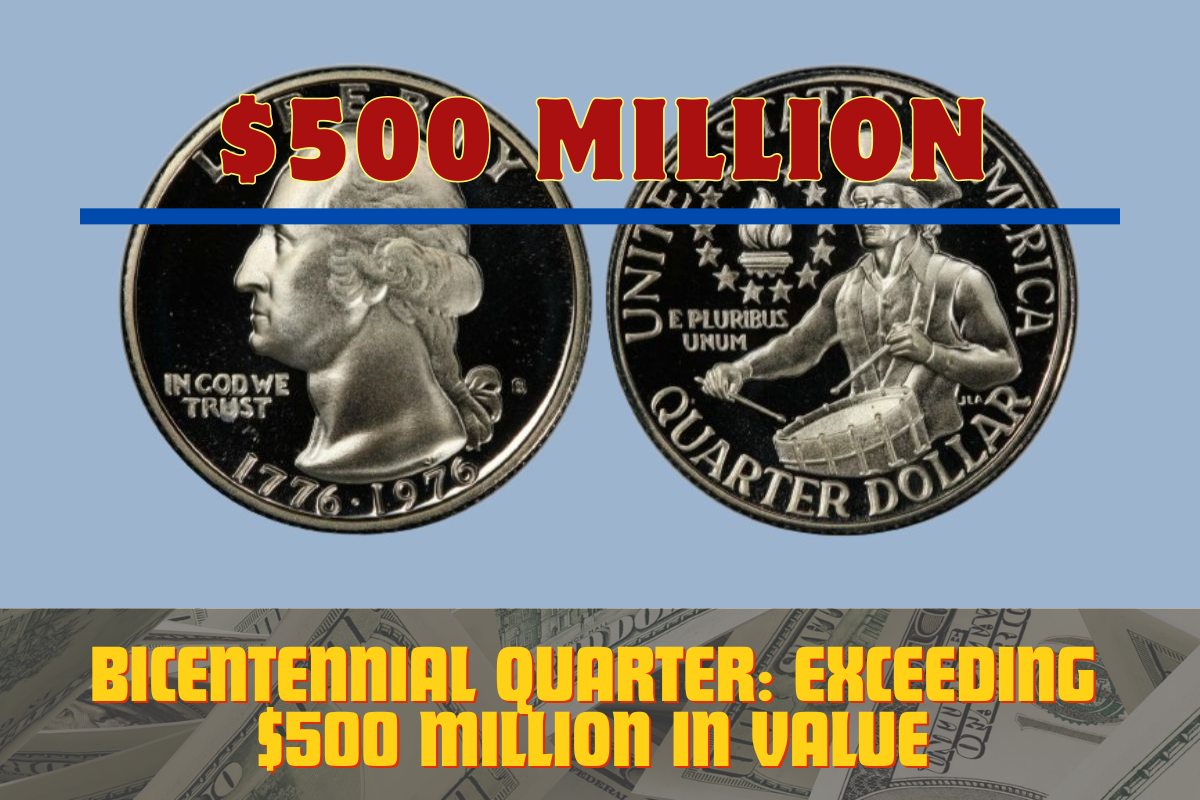The Bicentennial Quarter, with its unique design commemorating the 200th anniversary of the United States, has become a collector’s dream. You might be wondering why this specific quarter has garnered so much attention and value—how does a mere piece of currency end up exceeding 500 million in value? Let’s dive into the details that make the Bicentennial Quarter such an intriguing piece for numismatists and casual collectors alike.
What is the Bicentennial Quarter?
First things first, the Bicentennial Quarter was issued in 1976, marking a significant historical event. It features a distinctive design on the reverse side—a depiction of the drummer boy from the American Revolution. It’s flanked by the words “1776” and “1976,” representing the two centuries of American history. This design not only makes the coin aesthetically pleasing but also captures a momentous occasion that resonates with many American citizens. The obverse side maintains the classic portrait of George Washington, which adds more historical significance to an already special coin.
Why Are Bicentennial Quarters Valuable?
You may be asking yourself, “What makes some Bicentennial Quarters worth so much more than others?” Well, the answer lies in multiple factors such as rarity, condition, and demand. While most Bicentennial Quarters were minted, only a few have survived in pristine condition, which dramatically increases their value.
Rarity and Minting Numbers
The U.S. Mint produced over 1.6 billion Bicentennial Quarters. Even though this may sound like a vast quantity, collectors often seek out those in uncirculated condition or with unique mint marks. Some variants may even exceed a million in value when they satisfy these criteria. If you happen to find a rare one during your coin hunt, it might just be your ticket to a significant payday!
Condition is Key
Another critical aspect is the condition of the quarter. In the world of coin collecting, we often hear the phrase “condition is king.” A quarter that is graded well might fetch thousands, while one that’s heavily worn may only be worth its face value. Coins are graded on a scale, and those achieving high grades can see their prices skyrocket!
The Demand Factor
The law of supply and demand comes into play here, just as it does in any other market. The right collectors can raise the stakes on certain coins, creating a buzz that drives prices upward. If you have an eye for detail and can spot a potential money-maker, you could find yourself in an exciting and lucrative niche.
How to Assess Your Bicentennial Quarters
If you have some Bicentennial Quarters at home, it might be worth taking a closer look. Start by checking the mint marks located on the obverse side, which indicate whether the coin was produced in Philadelphia, Denver, or San Francisco. Look closely at their condition—are they shiny and new, or do they have scratches and marks? The minute differences can make all the difference in value.
Conclusion
The Bicentennial Quarter isn’t just a cute piece of currency—it’s a slice of Americana that’s appreciated by collectors around the globe. Its ability to exceed 500 million in value lies in its mix of rarity, condition, and ever-evolving demand. So the next time you stumble upon a few quarters, don’t just flip them away; they might hold hidden treasures waiting to be uncovered!
FAQs
1. What makes the Bicentennial Quarter so special?
The Bicentennial Quarter features a unique design commemorating the 200th anniversary of the United States, making it a meaningful collectible.
2. How can I determine the value of my Bicentennial Quarters?
Assess their condition, check for mint marks, and compare with prices from reputable coin collectors or numismatic catalogs.
3. Are all Bicentennial Quarters valuable?
Not all are valuable. Factors like condition, mint mark, and rarity determine their market value.
4. Can Bicentennial Quarters be sold?
Yes, they can be sold through coin dealers, online auctions, or at numismatic shows.
5. How many Bicentennial Quarters were minted?
The U.S. Mint produced more than 1.6 billion Bicentennial Quarters.

